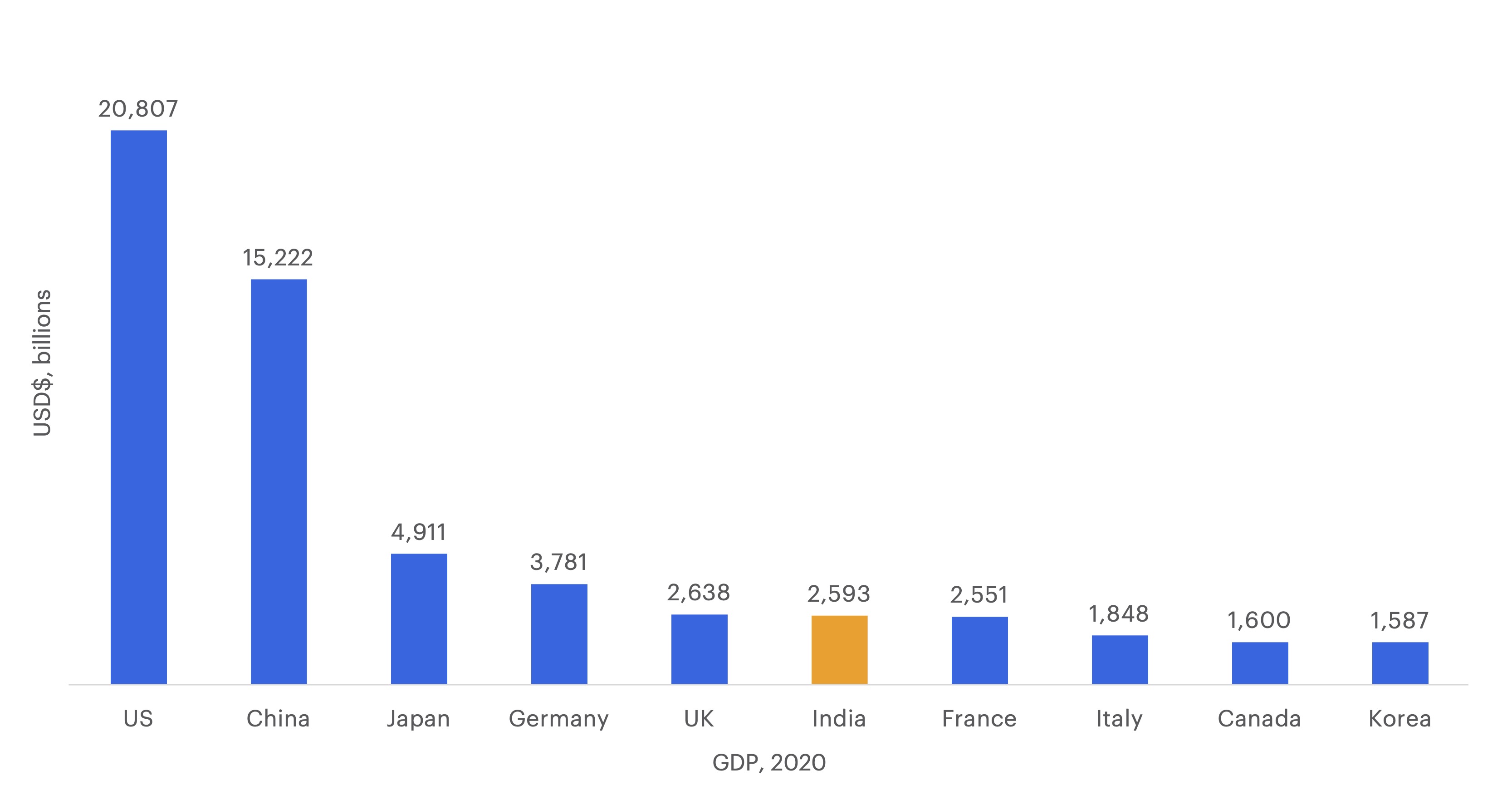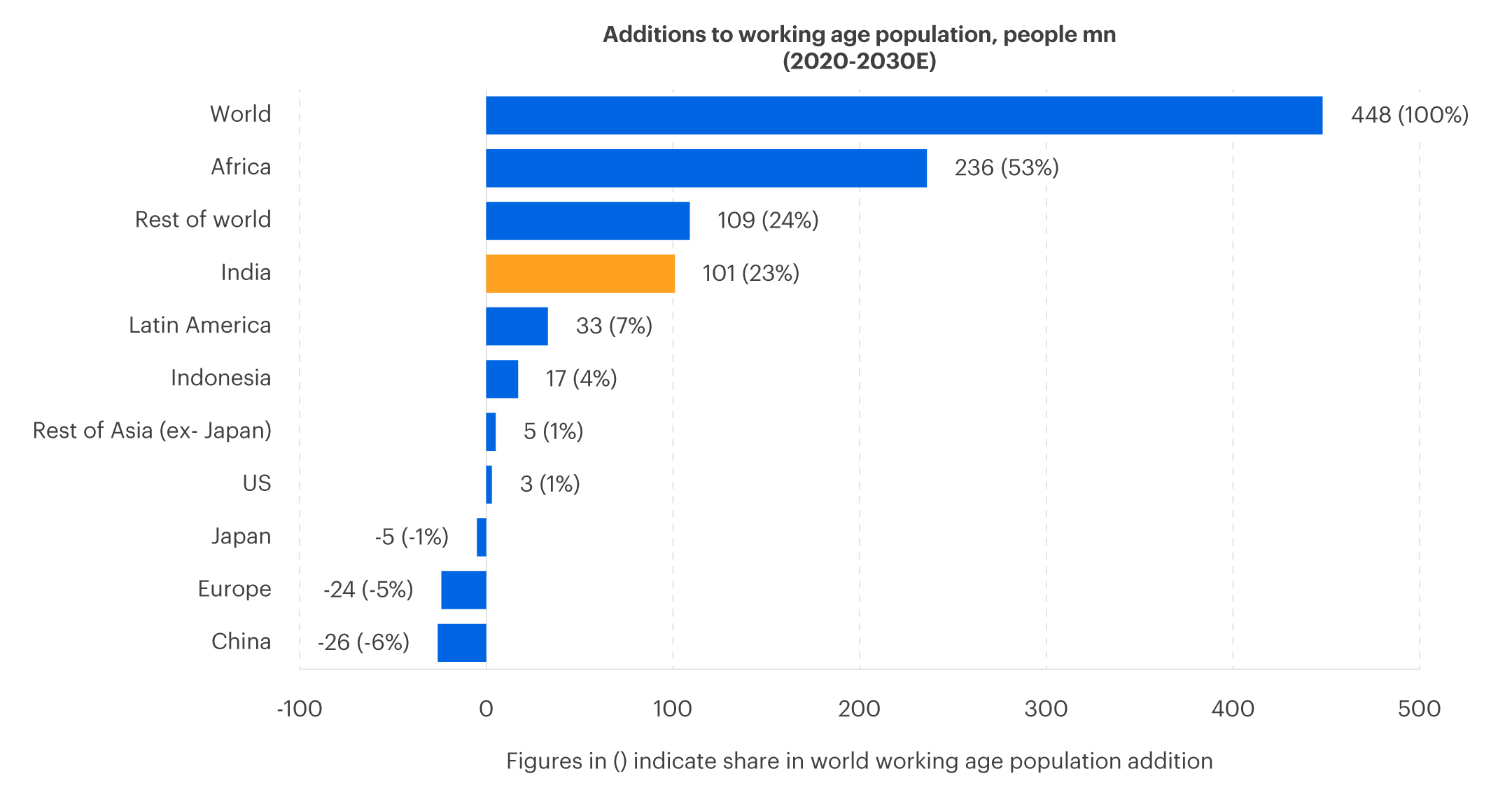What to know about India’s economy and stock market
Morgan Stanley Research
06/15/22Summary: India’s GDP has increased 11-fold, and its equity market cap has grown by 30-fold over the past three decades. Discover what’s behind the country’s economic growth and the unique characteristics of its stock market.
When India opened to foreign investors in 1993, its economy and equity market were a mere fraction of what they are today. India’s gross domestic product (GDP) and equity markets have expanded by 11-fold and 30-fold since then, transforming the Asian country into the world’s sixth-largest economy.
With its GDP on pace to reach $6.4 trillion by 2030—along with its per capita income hitting $4,279—India is headed squarely for middle-income territory.
In April 2021, the Morgan Stanley Research team conducted a deep dive on the country’s history, identifying India’s biggest growth drivers and what investors should know about the Indian equities market.
India was the sixth largest economy in 2020

Source: International Monetary Fund, Morgan Stanley Research
Productivity fuels long-term growth
Multiple positive trends may boost India's economy over the next several years. According to Morgan Stanley Research, some of the country's most significant drivers of growth will be:
Continued globalization. India's integration with the global economy picked up pace in the 1990s. The country's exports of goods and services accounted for 18.4% of India's GDP in 2020, an increase from 11.5% in 2000. In fact, India's high-performing services exports are a vital contributor to its growth, totaling 3.5% of Indian GDP in 2019 compared to 1.1% in 2000.
Favorable demographics. The sheer number of people able to work in India is growing. For example, the ratio of the elderly and children to the working-age (aged 15-64 years) population has declined from 68.6% in 1995 to 48.7% in 2020, according to UN estimates. By 2030, India will account for 23% of the world's working-age population.
India will account for 23% of the working age population in 2030

Source: Haver Analytics, Morgan Stanley Research. Note: Africa is sum of 58 countries, Rest of Asia ex- Japan is 10 AXJ economies ex India, Indonesia, and China.
Improved productivity. Perhaps the most encouraging trend has been governmental policy changes to spur economic growth. For example, the Indian parliament passed legislation to help attract investments into the country's agricultural sector and boost rural incomes. Reduced corporate tax rates have also paved the way for more corporate investment and growth. These and other measures may help accelerate real GDP growth to 6% through 2030, up from 4% in 2020.
As productivity drives the next decade of expansion, India stands to experience more job creation, increased urbanization, and the formalization of its economy. Indian consumers will also likely change their buying habits as their income increases. With all these trends in play, India is poised to be one of the highest-growth economies among large countries over the medium term.
Understanding India’s equity market
As India’s economy and markets evolve, investors may be interested in gaining exposure. However, before diving in, take note: India’s equity market is more diverse than its emerging market peers, and several of its sectors behave differently.
Here are a few factors about India’s equity sectors to keep in mind.
Consumer: Indian consumers eat at home an average of 19 times a week—significantly more than consumers in other countries. Also, in reverse from most developed economies, fresh food remains far more expensive than packaged food.
Energy: The power sector in India only accounts for ~20% of the country’s gas demand (globally, the power sector usually drives gas demand). Instead, India’s non-power sector is responsible for most of the country’s gas consumption.
Financials: Banks aren’t the only lenders in India. In fact, non-bank lenders account for 25% of the total credit provided in the country.
Industrials: To evaluate engineering, construction, and procurement firms, investors typically look at cash flow as the key metric. However, in India, investors view new orders at the most important indicator of business health.
Technology: The majority of India’s online traffic comes directly from apps. This is a marked difference from the US, where most internet traffic comes from search engines.
Telecoms: Wireless data consumption in India is higher than in many developed countries. That’s because the wireline infrastructure is significantly underdeveloped.
Utilities: Reform measures typically drive the performance of Indian utilities, causing investors to view the stocks as cyclical.
The world’s most populous country continues to make economic strides. Keep your eye on India’s growth and the factors that make this growing economy and equity market unique.
The source of this article (including claims and data), Primer: A Look at India's History and the Path Ahead, was originally published on April 5, 2021.